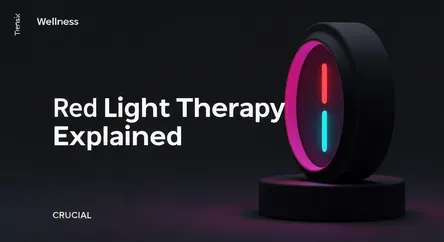Wellness
Red Light Therapy Explained

Discover red light therapy, the non-invasive treatment trending in wellness for its skin-rejuvenating and healing benefits.
What is it?
Red light therapy (RLT), also known as photobiomodulation, is a non-invasive treatment that uses low-level wavelengths of red light to target cellular processes. Unlike damaging ultraviolet (UV) light, RLT penetrates the skin to stimulate the mitochondria—the energy centers within cells. This boost in cellular energy is thought to enhance cell repair and rejuvenation. The therapy is delivered via various devices, including LED masks, panels, and wands, making it accessible for both clinical and at-home use. It is considered a safe treatment with minimal side effects when used as directed.
Why is it trending?
RLT has surged in popularity within the wellness and beauty communities for its wide range of potential benefits and non-invasive nature. Its rise is fueled by growing interest in at-home skincare technology and celebrity endorsements. Many users and preliminary studies report promising outcomes for skin health and anti-aging, from reducing wrinkles to improving acne. While experts agree more comprehensive research is needed to confirm its effectiveness for all claimed uses, the existing positive results have solidified its status as a popular wellness trend.
How does it affect people?
For many individuals, RLT is a key part of their skincare routine to improve skin appearance. It is believed to work by stimulating collagen production, which helps reduce fine lines, wrinkles, and sun damage while improving overall skin texture. People also use it to treat conditions like acne, psoriasis, and rosacea by reducing inflammation. Beyond aesthetics, RLT is used for promoting hair growth, accelerating wound healing, and providing relief from joint pain and muscle soreness.